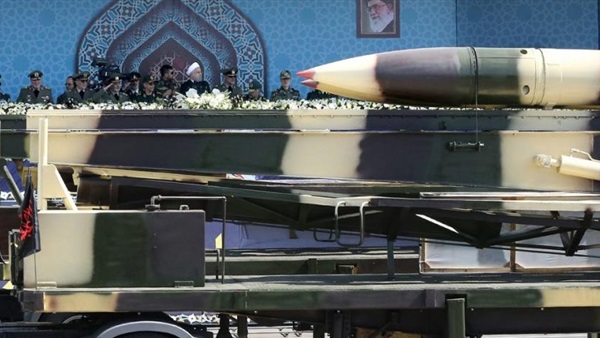Lifting arms embargo on Iran: New complex paths await Middle East

Iran is in a state of anticipation pending the lifting of
the arms embargo against it, as Tehran announced that it has the right to
export and buy conventional weapons without permission starting October 18,
despite the US administration’s decision to re-ban Iran's arming, considering
that the US President Donald Trump’s administration, which imposes a ban on
Iranian banks, is nothing but a theatrical performance and psychological
warfare.
Both Russia and China are looking forward to this date in
order to consolidate their close military alliances with Iran and to push
advanced weapons to the country, which will then be available to terrorist
groups loyal to Iran, including Hezbollah in Lebanon.
Tehran signed the nuclear agreement with major world powers
in Vienna in 2015, but the Trump administration unilaterally withdrew in 2018. The
Iranian Foreign Ministry considered this a date for its historic victory over
the United States, which did not succeed in implementing its agenda and
continuing to impose sanctions individually outside the international
community, after the UN Security Council rejected an American proposal to
extend the weapons embargo on Tehran to be the last step in the policy of
maximum pressure on Iran.
Trigger mechanism
Washington has announced its policy in dealing with
sanctions against Iran after the signatories to the nuclear agreement announced
their commitment to the clause of lifting sanctions as proof of their adherence
to the agreement and dropping Washington’s attempt within the Security Council
to extend the sanctions. The US Treasury Department announced the imposition of
additional sanctions on some major banks in Iran on an individual basis, telling
the world they can either deal with it or with Iran.
Iranian Foreign Ministry spokesman Saeed Khatibzadeh
commented during a press conference on this step, “We used to say that the
Americans are addicted to sanctions, but now they have reached a stage of
madness. We do not rule out that they impose sanctions even on things that
cannot be imagined. Washington resorts to the insane use of sanctions against
everyone who is not subject to them, while such sanctions push many countries
to search for alternatives to the US dollar.”
The US sanctions on Iran have caused major economic crises
after its withdrawal from the agreement, which caused a significant decline in
the value of the Iranian rial against the dollar. Iranian Supreme Leader Ali
Khamenei described the new sanctions as a crime in every sense of the word, saying,
“The American president expresses his joy in imposing the ban and the maximum
amount of economic pressure. No one can boast of committing a crime against a
people other than the depraved like you.”
The US administration showed its indifference to the Iranian
opposition and the nuclear deal group. Former US Envoy Brian Hook confirmed
this by saying that his country will move to restore international sanctions as
before the nuclear agreement through the trigger mechanism, which gives the
United States the right to activate sanctions in if it considers that Tehran
has violated its obligations.
Iranian challenges
With the Americans having failed to extend the arms embargo
on Iran for months in light of the rejection of the vast majority of the
Security Council and despite the international resolution in the Security
Council that thwarted the American effort, Iran announced in mid-September that
there are 1,044 centrifuges currently working on uranium enrichment at the
Fordow site.
In the context of these developments, information indicated
that the Russian company Rosoboronexport is in its final stages of contracting
with Iran to complete a large defense and offensive arms deal, which will
include advanced aircraft and S-400 systems. This is in contradiction to
Security Council Resolution 2231, which provides for the prohibition of selling
offensive weapons to Iran without prior approval from the Council.
Decision’s implications
Muhammad Abadi, an expert on Iranian affairs, told the
Reference that Iran has been relying on a strategic solution of two issues for
a long time. The first is missiles. If the United States wants a war against
Iran, it has the ability to turn the Middle East into a mass of fire through
the long-range missiles it has been investing in for decades. The second thing
is that Iran has relied on a number of militias in Iraq, Lebanon, Yemen and
Syria; if war were launched against them, it could ignite these areas as well.
Abadi added that if Iran wants to make reasonable use of
weapons after October 18, then it has a long time to be able to obtain advanced
weapons and even bypass these companies and countries that have pending files
with the United States.
Then Iran may not count very much on the weapons it would
import from Russia and China if it could, but its constant equation in the
Middle East is its long-range missiles and affiliated militias.







